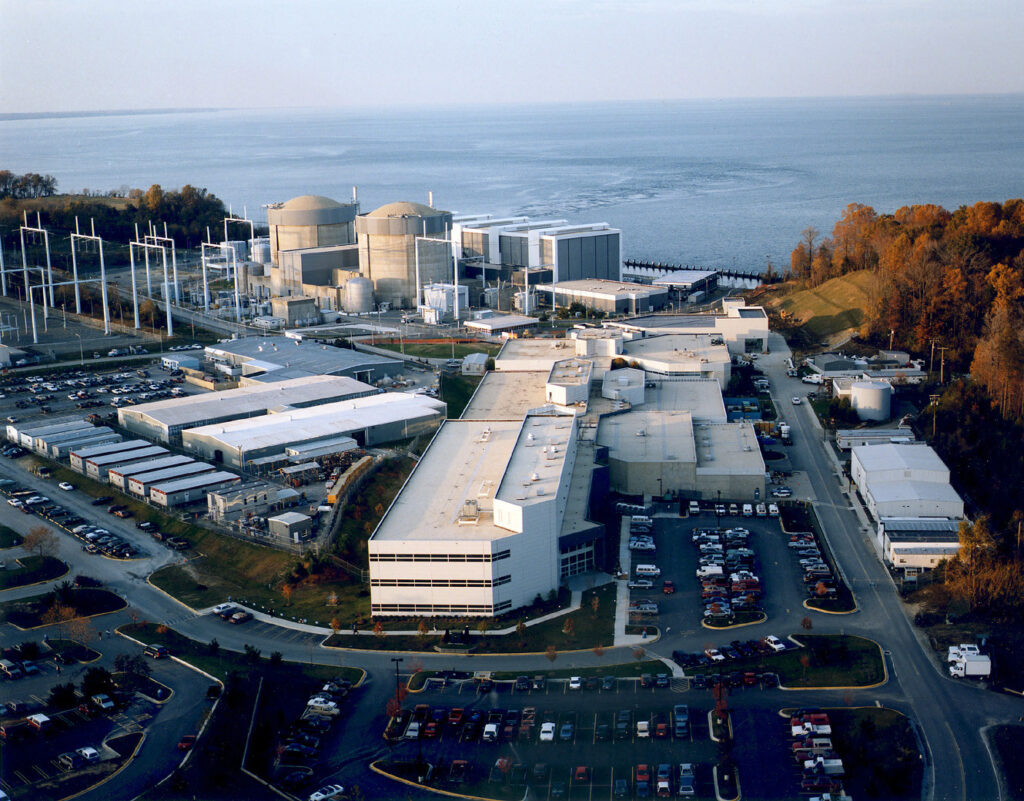The Calvert Cliffs Nuclear Power Plant Units 1 and 2 are located near Lusby. Photo by the Nuclear Regulatory Commission.
In the next few weeks, Maryland officials are expected to deliver comprehensive plans for how state agencies will tackle the growing climate crisis and deliver on Gov. Wes Moore’s promise to achieve zero emissions across all of the state’s key sectors in the next two decades.
In June, Moore issued an executive order that set a Nov. 1 deadline for these detailed implementation plans as the next phase of a 2023 report called the Climate Pollution and Reduction Plan (CPRP). From agriculture to building codes to transportation, the CPRP made hundreds of recommendations that now await the rollout of actionable plans by the governor and state leaders.
Unfortunately, the one idea that seems to be gaining the most traction in recent months is an expansion of dangerous nuclear power for electricity generation. News reports have indicated that state legislators and administration officials are warming up to the radioactive idea of bringing in expensive new nuclear reactors to Maryland.
Marylanders should be very wary of this push and the perverse notion that nuclear industry backers are using to siphon off taxpayer money for these reactors. They argue that, because nuclear power plants do not burn fossil fuels, they should be counted as “clean energy.”
Their goal is to encourage the construction of new nuclear reactors in the U.S. and prevent the shutdown of dangerous old reactors like Maryland’s own Calvert Cliffs that cannot compete economically with truly clean energy sources like wind and solar power. They also want billions in taxpayer-funded subsidies to go to the industry.
The real story is that building enough nuclear power to make a meaningful reduction in greenhouse gas emissions would cost trillions of dollars, create tens of thousands of tons of lethal high-level radioactive waste, and potentially result in a Three Mile Island- or Fukushima-scale accident. Why would we want that in Maryland?
But perhaps as importantly, a nuclear buildout would squander the resources necessary to implement meaningful climate change policies to advance wind and solar.
Given that the governor has pledged to achieve 100% clean energy by 2035, it makes sense for his administration to go all in on wind and solar since they can be developed and built out in a few years to help meet that goal. Nuclear energy, on the other hand, would take decades to bring on line. Moore’s administration should not be distracted by the dirty options being promoted by industry lobbyists – nor should it waste taxpayer subsidies on these deeply flawed measures.
Unfortunately, the governor seems to be buying into the rush to build out data centers meant to help artificial intelligence, centers that will likely require a huge amount of energy. The governor actually pushed a pro-data center bill through the last legislative session that raised huge red flags among environmentalists because of the lack of guardrails for communities and the environment.
The nuclear industry is betting big that it can shoehorn reactors into sites adjacent to these data centers if the governor moves forward. But even in that case, investing in nuclear power makes no sense. The tech industry wants to build data centers now, not to wait the 15 or 20 years it would take to build the new nuclear power plants.
Georgia just finished building the first new nuclear reactors in decades for $36 billion. The facility took seven years longer to build and cost $22 billion more than expected. Ratepayers’ bills have jumped by nearly 25 percent to pay for it. It would be worse for us. Georgia is a much larger state than Maryland, so the cost is spread out over millions more people than it would be here. Maryland should relearn the lessons from the 1990s, when nuclear energy was rejected and see the Georgia facility as a warning.
Maryland should invest in truly clean renewable energy and move away from the old, dirty methods of generating electricity in this country. Otherwise we may have squandered the small window of opportunity to get it right, to the chagrin of future generations that will have to deal with the devastation to our environment and public health that nuclear power could bring.

